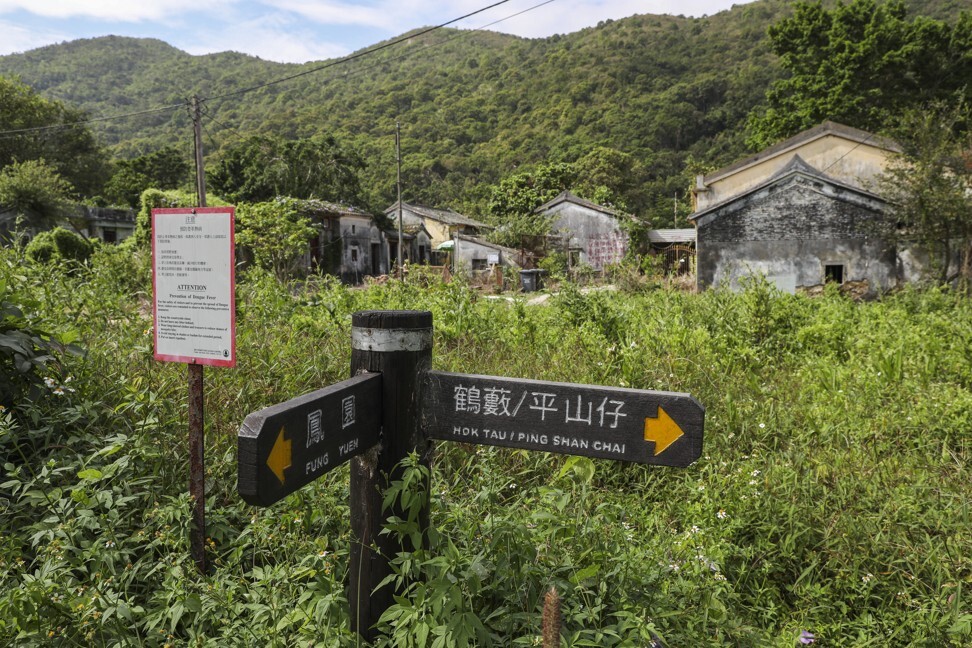
Hong Kong officials approve land-swap deal to protect, restore Sha Lo Tung wetland in Tai Po
- Government will finally implement the land-exchange arrangement with Sha Lo Tung owner three years after it was agreed in principle
- The 50-hectare Tai Po wetland is one of 12 priority sites for environmental protection
Officials have approved a land-swap deal with the owner of an ecologically sensitive wetland in northern Hong Kong to guarantee the site’s long-term restoration and preservation.
The government confirmed on Wednesday it would take over Sha Lo Tung – a 50-hectare protected area of Tai Po district home to endangered wildlife – in exchange for handing the former owner an alternative site to develop its planned golf course, finally implementing the arrangement three years after it was agreed in principle.
Stretching between Cloudy Hill and Wong Leng, Sha Lo Tung was listed in 2004 as one of 12 priority sites to be protected under the government’s nature policy that regulates and conserves Hong Kong’s important natural resources.

The site was mostly privately owned and was earmarked to become a golf course, until the government proposed to the developer a land-swap deal in 2017 to repossess the land.
The Sha Lo Tung area was then put under a management agreement between Green Power and the Agriculture, Fisheries and Conservation Department for rehabilitation and conservation.
Some 11.45 hectares of Sha Lo Tung’s 50 hectares is managed by local environment group Green Power, which has been reviving and preserving the land since 2018.
The former developer, which once held 90 per cent of the land, will receive a restored landfill site in Shuen Wan for its golf course as part of the land exchange agreement with the government.

The decision by the Hong Kong leader and her de-facto cabinet to proceed with the deal comes three years after the parties reached an agreement in principle for the exchange, with the time lag partly attributed to environmental impact assessments and the completion of land transfer paperwork.
A government spokesman emphasised that the Sha Lo Tung land-swap deal was “a very unique, exceptional and isolated case” and said the administration would not consider taking such an approach lightly for conservation purposes.
“It is an arrangement made under the consideration of the concurrent existence of a combination of special circumstances in Sha Lo Tung, which includes the very high ecological value of the land there and its much-needed active conservation,” the spokesman said.
A hike around Sha Lo Tung, rural gem saved from developers
Other recent land-swap deals were struck in the name of heritage conservation and involved the private owners of King Yin Lei mansion on Stubbs Road in 2008 and Coombe Road near The Peak in 2018.
The Sha Lo Tung arrangement means that conservationists can continue to preserve and restore the natural ecology of the site, which was once degraded following the planting of non-native rapeseed plants.
“We are glad to see the land exchange happening, this approval is a step forward to us,” said Matthew Sin Kar-wah, senior environment affairs manager at Green Power, which will continue to look after the land until the exchange is complete.
“Before this there was a big question mark hanging over everything, and after the land was abandoned a lot of destruction took place,” he added.
But Sin said further legal processes were necessary even after the land swap had been officially approved, adding Green Power had yet to hear from the government on the completion date.
In the meantime, he said Green Power would continue to handle the conservation and education work it was already undertaking in the area.
“Our biggest worry is always that Sha Lo Tung would come under threat again, but so far, things are okay under our management,” he said.
Conservationists were ecstatic to find the Romer’s tree frog, an endangered frog native to Hong Kong, in Sha Lo Tung during an ecological survey of the site’s wetland in June 2018.
One of the most extensive freshwater wetlands in Hong Kong situated some 100 metres above sea-level, Sha Lo Tung is also home to crab-eating mongoose and the Ryukyu Dusk-hawker dragonfly.


